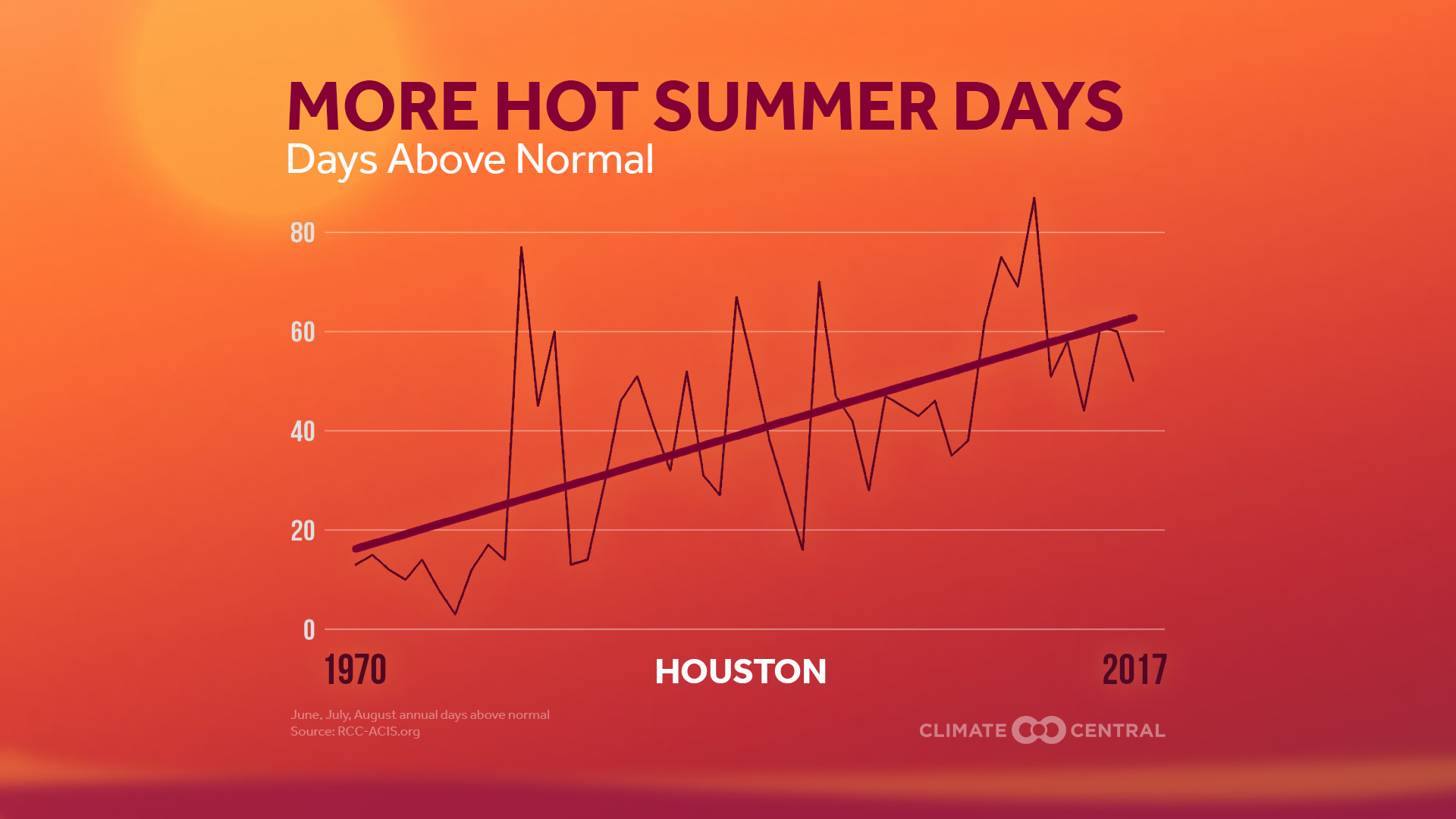The summer solstice occurs at 6:07 a.m. EDT on June 21, marking the beginning of astronomical summer in the northern hemisphere. Meteorological summer, which marks the beginning of the three hottest climatological months of the year, started on June 1. No matter how you look at summer, it is the season with the most obvious climate change impact — extreme heat.
Hot summer temperatures are getting more and more of a boost, as the increase in atmospheric greenhouse gases is adding more heat to the atmosphere. In a stable climate, the number of days above and below normal should balance out during the 92 days of meteorological summer, at about 46 each. But the number of summer days above normal has been trending upward in most of the country, with 92 percent of the 244 cities in our analysis seeing more summer days above normal than a half-century ago. Some of the largest increases are in Florida, Louisiana, and Texas.
Over time, this warming will change what is considered normal. The current normal temperatures come from NOAA/NCEI and are based on 30-year average temperatures from 1981-2010. Those normals will be redefined in a few years with data from 1991-2020. But this increase in hot days is already forcing the running 30-year average temperatures higher in most locations across the U.S.
Hotter days are often associated with air stagnation and they increase the risk of health-related illnesses, like heat stroke and respiratory disease. They also cost money. A 2015 report from the U.S. Energy Information Administration indicated that American households spend more on air conditioning than any other part of their annual electricity budget.
METHODOLOGY: The graph indicates the number of summer days (June, July, August) above the 1981-2010 NOAA/NCEI climate normal. For each month, we counted the number of days when the daily average temperature departure from normal is greater than zero.
